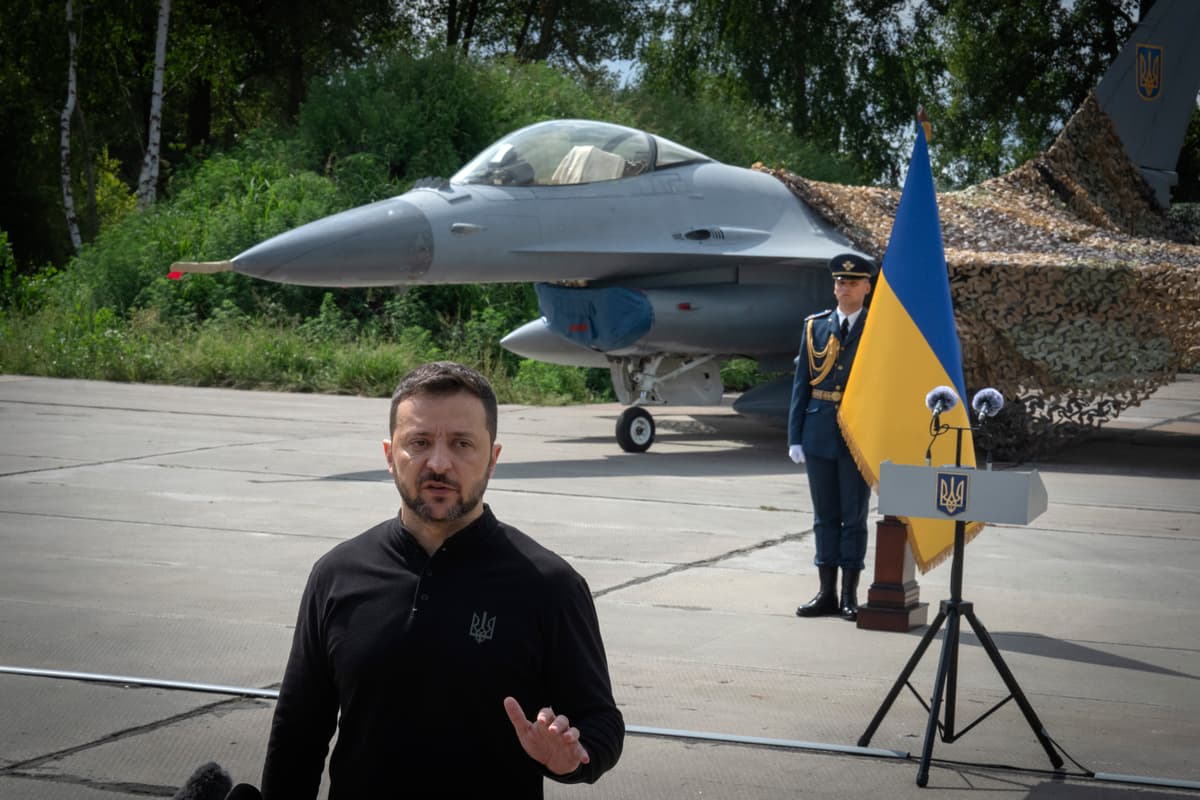Kyiv’s New F-16s Are Unlikely to Turn the Tide of War in the Short Run
Despite high hopes for Kyiv’s F-16, air superiority in Ukrainian skies is ‘four to five years’ away.

BERLIN — The first F-16s are aloft in Ukraine, but they’ve recently suffered their first losses — and they won’t have much effect on the battlefield until the end of this decade, a military aviation expert tells the Sun.
Ukraine will need many dozens — if not hundreds — of qualified pilots, mechanics, and a sea of spare parts to keep the American-designed jets war-worthy. A source tells the Sun the current training pipeline for those assets is woefully insufficient.
Kyiv is facing multiple setbacks. On the ground, their incursion into Russia’s Kursk region may prove to be a liability rather than a useful bargaining chip for future negotiations. On the air front, President Zelensky sacked his air force chief on August 31 following the loss of a storied pilot and aircraft under still-murky circumstances.
“We don’t have a lot of good, very specific reporting on exactly what happened,” a senior fellow at the Stimson Center, an international security think tank, Kelly Grieco, tells the Sun. Some reports, she notes, have suggested it was a Patriot missile that accidentally mistook the Ukrainian F-16 for, apparently, a Russian aircraft.
Ms. Grieco adds that figuring out who’s who in the air can be a challenge even for NATO air forces — including for America. However, the loss comes at an inopportune time. Mr. Zelensky had long pleaded with Western partners for a no-fly zone over Ukraine. His administration eventually tacked through stiff political headwinds opposed to the request, saying Ukrainians could push back the Russians with Western-supplied F-16s.
While Ukrainian-piloted F-16s have notched several kills against Russian drones and other airborne ordnance, Kyiv is in no shape now to exert actual air superiority against Russian forces.
Ms. Grieco said that the norm in the West is to have a ratio of three or four pilots for every fighter aircraft. “But right now, we have the opposite in Ukraine.” Despite Ukraine’s relatively small fleet, “there are way more aircraft than trained pilots.”
If pilot and maintainer training and jet delivery timetables hold to their respective schedules, the anticipated 60-odd aircraft promised to Kyiv won’t be enough to keep the Kremlin’s forces at bay anytime soon. Compared to the Soviet-era MiG and Sukhoi fighters Ukraine has been flying, the F-16 is “fragile” — though it is a higher-performance, more capable platform, Ms. Grieco added.
“F-16s need a long, pristine runway, which also means it becomes easier for the Russians to potentially figure out where those aircraft are operating from.” Ms. Grieco notes that “the best place to destroy an aircraft is on the ground.”
While raw F-16 tallies are certainly a pressing concern for Ukraine right now, quality is just as pressing a metric as quantity.
NATO countries are training Ukrainian fighter pilots and maintainers simultaneously, “graduating them together, and then gradually increasing the number of aircraft that are in Ukraine.”
This tandem training pipeline arrangement, carried out in friendly NATO countries, will be crucial when, in the future, Ukraine can field F-16s in increasingly higher numbers. It requires time and careful preparation, though.
In addition to pilots and maintainers, complex support infrastructure is needed on the ground to keep the jets aloft, and information-gathering assets are required in the air to “maximize capabilities” and make air operations successful.
“Muscle memory” is one of the most critical components of being a genuinely effective fighter pilot, Ms. Grieco explained — a reflexive, streamlined thought process.
“The way you get that instinct is through repetition,” she says. “And the longer you’re doing it, the more that repetition builds up and it becomes pure instinct.”
She estimates it will take “four to five years” before Ukraine has enough fighter jets, fighter pilots, and maintainers. There’s no replacement for time in that regard.
Though qualified on their legacy Soviet-era jets, Ukraine’s pilots are not as well trained as their Western counterparts. Consequently, they’re likely to suffer higher rates of losses like last week’s F-16 downing.
Rushed and inexpedient — imperfect though the Ukrainian F-16 pilot and maintainer training pipeline may be — time doesn’t wait for the realities of war.

